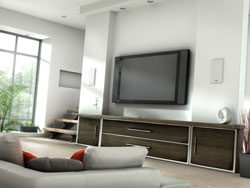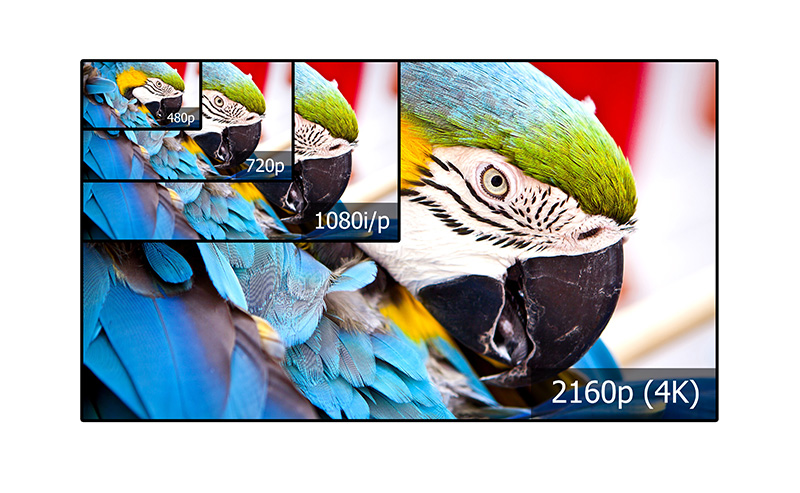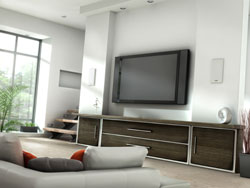
New models of consumer electronics products almost change with the seasons: you've finally understood why you need a High Definition Television (HDTV) when along comes yet another electronic upgrade. As exciting as these developments are, they may also provoke vague feelings of discontent. This can occur if some know-it-all points out that your HD display is only 720p. When this happened to me recently, I countered with the fact that I was viewing HDTV while this person was still in nursery school. ( Japan developed an analog version of HDTV in the 1980s, which I saw on press trips to Japan and later viewed in Canada when TV broadcasters there considered adopting the Japanese HDTV system for the future needs of Canadian TV broadcasting. It was ultimately rejected.)
As many readers are aware, the 1080p tide has been rising for at least a year and this spring it seems to have reached a new high-water mark, in part stimulated by the market appearance of new high-definition DVD players: HD-DVD and Blu-ray, recorded and studio mastered in 1080p. These two formats are not compatible (except for LG's HD-DVD/Blu-ray combo player, and a new combo unit due from Samsung), however they will play your existing DVDs.
Resisting the marketing juggernaut is never easy (we really know how to consume in the 21st century) so in the spirit of both welcoming and explaining 1080p, here are some guidelines to help you navigate the claims and counter claims:
1. What is it? 1080p stands for 1080 progressive. It means that a video display or video source has the capability to display a high-definition video image made up of 1080 horizontal lines progressively scanned from the top to the bottom of the screen. Your old analog CRT set yielded about 330 lines. A standard DVD player delivers 480 lines. In techie terms, a 1080p high-definition set will display an image comprised of 1920 x 1080 pixels, or approximately 2 million pixels (a pixel is a picture element) versus a 720p image, which consists of 1280 x 720 pixels, or about 921,600 pixels. Other things being equal, the more pixels there are in an image, the greater the potential detail and clarity.
1080p is a refinement of HD video technology that has evolved from earlier HD displays known as 720p or 1080i (i for interlaced). The latter (720p or 1080i) are the existing standards for HD images broadcast over the air or by cable or satellite. Broadcast 1080p images are not available—yet. But they may be some years down the road.
2. If you own or buy a new 1080p set, it will convert or upscale incoming 720p or 1080i images to 1080p. The upscaled images may look smoother and more nuanced, clearer if you will, than those viewed on a 720p set.
3. If you already own an HD set that is several years old, it will likely be a 720p model (rarely 1080i unless it's a CRT HD set), so there is no point in getting video sources that deliver a 1080p image because your video device can't display the extra pixels, unless of course you decide to replace your 720p or 1080i HDTV with a 1080p HDTV.

4. If you are deliberating about buying a new 1080p large screen display, then it will let you do two things: either sit closer to the screen than you otherwise could if you had a 720p display, or, if you decide to go for a 1080p front projector, then you could project a considerably bigger screen image that would look as clear and sharp as a 720p image viewed from twice as far back.
For very large TV displays 65 inches diagonal, say, or projected images of 96 or 108 inches, you would see more detail from viewing distances of 5, 8, or 9 feet, respectively. Note that 9 feet is currently the average viewing distance for TV in most homes. On the other hand, because a 1080p set has almost twice as many pixels as a 720p display, subtleties and gradations of color and texture should be better, and visible.

5. Some new AV receivers and DVD players have built-in video up-conversion and scaling to 1080p. The upconversion to 1080p done in an AV receiver is only a convenience, and may not be executed as well as the conversion performed internally in your 1080p video display or projector.
6. Note that any 1080p display or 1080p projector will, on its own, upconvert any incoming standard or high-definition video source connected to it to 1080p. You do not need to purchase an outboard scaler in an AV receiver to perform that function. Your 1080p set will do that automatically because it must in order to display the image and fill all the pixels. (Techies call the latter the set's native resolution 1080p.)
7. You should also note that upconversion (scaling) to 1080p of standard definition (SD) video sources like regular DVDs or standard TV broadcasts will not make them look like a true HD image (720p or 1080i). They may appear smoother to the eye, but detail cannot be added by up-conversion.
8. The only sources currently available for true 1080p images are HD-DVD and Blu-ray discs, and those must be delivered from an HD-DVD or Blu-ray disc player via HDMI cables. HDMI connections carry video images as well as standard images and 1080p--in digital form, whereas component video cables are analog and carry 720p or 1080i HD images. While component video cables are technically able to pass 1080p images, Hollywood studios do not permit 1080p discs to be made without the anti-piracy digital handshake code that must be passed via HDMI cables. HD-DVD or Blu-ray players will only output 1080p signals over HDMI connections.
9. Finally, if you use a 50-inch to 60-inch diagonal HD display, and plan on sitting farther than 10 feet away from it, the 1080p display may not look any clearer than a 720p display would at that distance, however you may perceive a slightly smoother and more satisfying picture from the 1080p set. Still, we are talking subtleties here. Only if you sit 5 feet or so from a 60-inch 1080p screen will the increased clarity of 1080p be immediately apparent.
10. If you are about to purchase an HD set, then getting a 1080p display will future-proof your system because it will display the maximum picture resolution from HD-DVD or Blu-ray discs no matter which format wins, and it will be capable of displaying the highest clarity possible for almost any new video delivery system coming down the pipe. Of course, as we discussed earlier, there is always something else on the horizon, including the huge palette of colors obtainable with Deep Color, which new 1080p sets will be able to access through the latest version of HDMI 1.3 connections this fall.
Bargain hunters should note that 720p HDTVs and projectors are significantly less expensive than the new 1080p displays, often half the price of 720p sets 3 years ago. If serious budget constraints would make you compromise on other components in your home theater setup (e.g., a high-quality 5.1 or 7.1 channel speaker system) in order to get a 1080p display, then save some money and get a 720p set with an excellent home theater speaker system. A 720p HDTV display or projector is still High Definition and capable of beautifully detailed video images.







